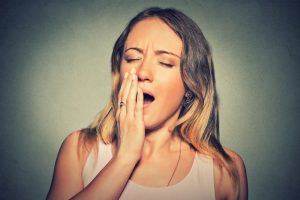Posted on Tuesday, December 18th, 2018 at 6:13 pm

The study evaluated the OSA and Menopause Rating Scale (MRS) of 1,691 of these women. Logistic regression was used to compare total MRS and VMS ratings, while body mass index (BMI), age, and smoking were included as covariates between women at intermediate or high risk versus low risk for OSA.
Evaluating OSA Risk Among Women with Night Sweats
VMS is among the most commonly reported symptoms of menopause. VMS is often characterized by increased blood flow to the face, chest, or neck. A 2012 study published in the International Journal of Women’s Health found that VMS occurs in up to 68.5 percent of women as a result of menopause.
VMS symptoms can vary their intensity and frequency greatly, with some women experiencing these symptoms indefinitely. VMS treatment often involves estrogen alone or used in combination with progestin.
According to the study, the total MRS scores were much higher in women with intermediate or high-risk OSA scores as opposed to those with low-risk scores. The study found that women with intermediate or high OSA risk were older, less likely to be married or employed, and had more education, self-reported hypertension, and BMI greater than 35 kg/m2.
Self-reported severe or very severe VMS cases were significantly associated with intermediate or high risk versus low risk for OSA, according to the study. The odds of having intermediate or high risk for OSA were 1.87 times higher for those with severe or very severe VMS compared with those with no, mild, or moderate VMS after adjusting for age, BMI, smoking status, and self-reported hypertension.
Mayo Clinic faculty member Stephanie Faubion, M.D. said that OSA is frequently thought of as a man’s disease, but cautioned that the risk for women increases in their menopausal years. Faubion noted that many symptoms, such as headache, depression, or fatigue, may not be visible but still carry just as many health risks.
Get Sleep Apnea Help Today
The study cautioned that OSA risk might have been overestimated because of the limitations of the STOP-BANG tool. According to the Mayo Clinic, 65 percent of the women who demonstrated an intermediate or high risk of OSA was still not diagnosed with the condition two years after clinical consultation when VMS was self-reported.
Left untreated, OSA can involve serious health issues such as increased risks of stroke, coronary heart disease, and high blood pressure. Silent Night Therapy can help you find the solutions to your sleep apnea issues. Let us offer a solution as soon as you call (631) 983-2463 or contact us online today.